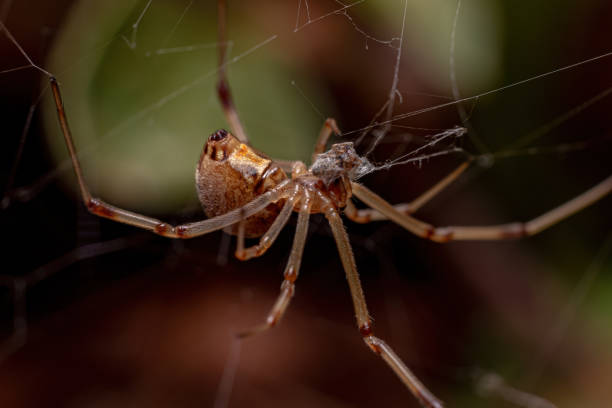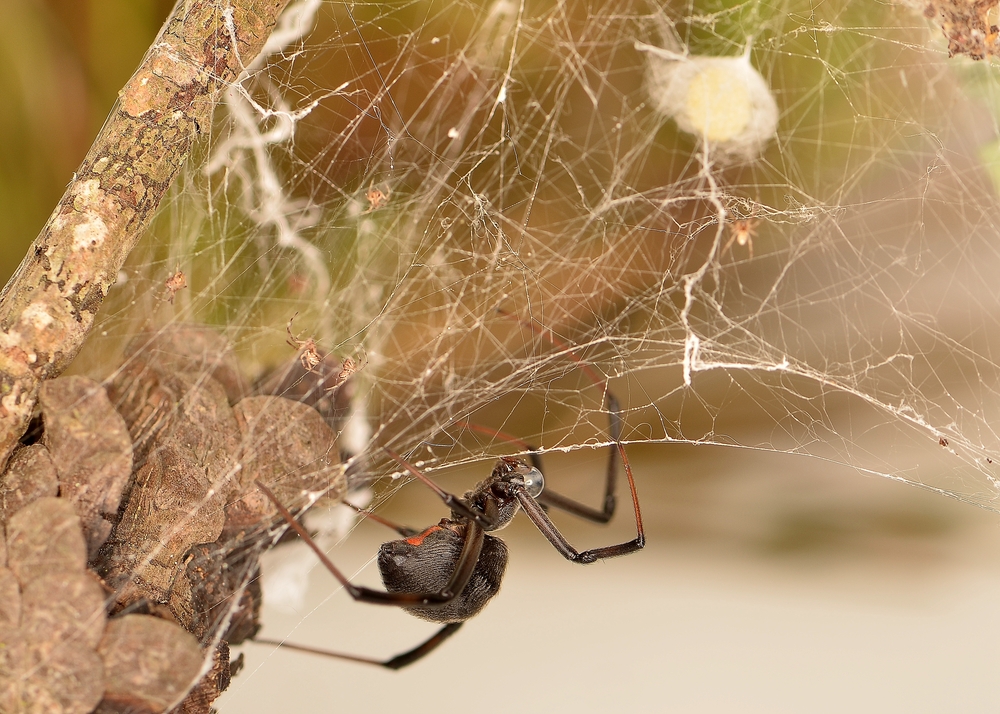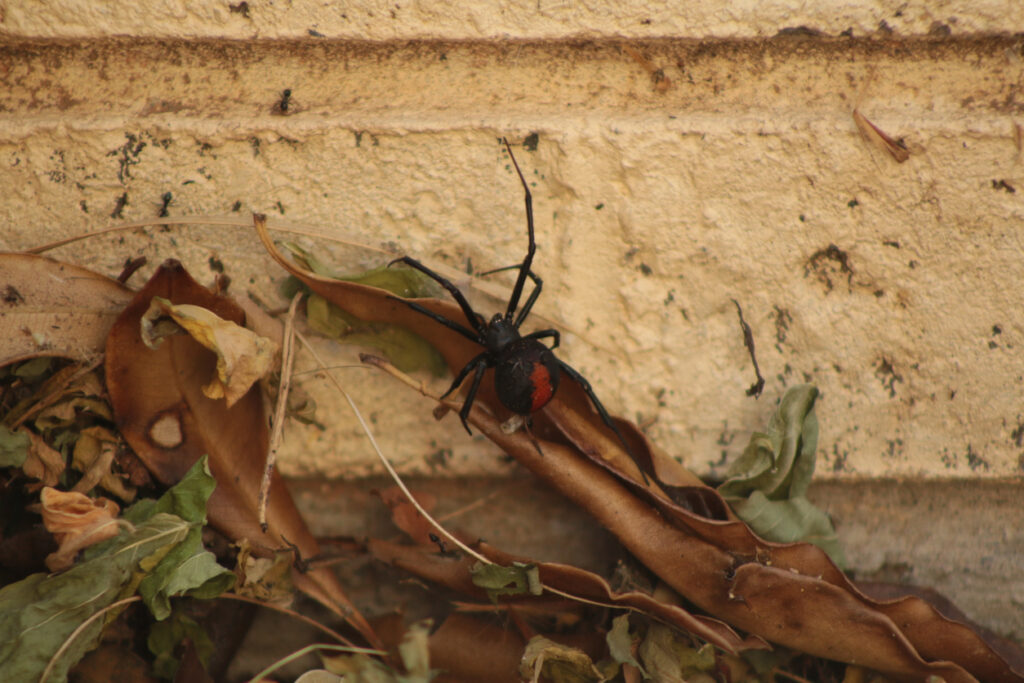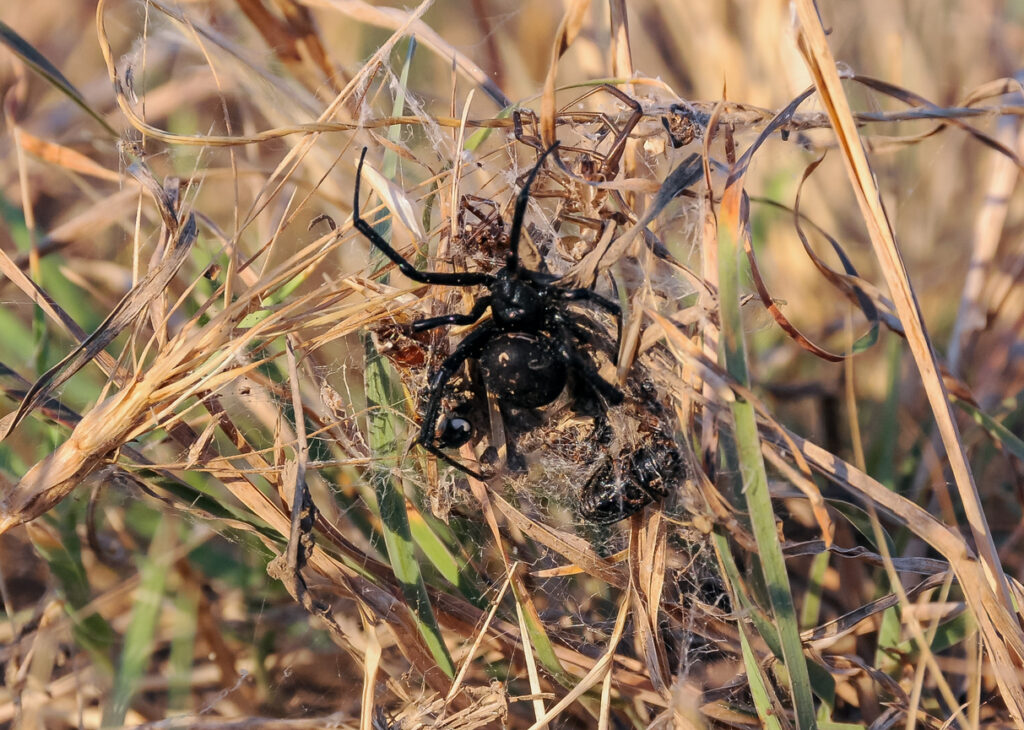1. The Black Widow’s Deadly Reputation Is More Than Just a Name

If a spider could win an award for the most ominous name in the arachnid world, the black widow would take the trophy—no contest. This infamous eight-legged predator is as deadly as it is misunderstood, lurking in dark corners, garages, and woodpiles with an almost theatrical patience. With a bite potent enough to send a full-grown adult into convulsions, it’s no wonder these tiny creatures have become the stuff of nightmares. And then there’s the infamous reputation that gave them their name: the grim tradition of the female sometimes making a meal out of her mate after reproduction. Talk about a ruthless love life.
But before you start checking under your bed, here’s the thing: black widows don’t go around looking for trouble. They’re silent assassins, preferring to stay hidden rather than actively hunt. Their weapon of choice isn’t speed or brute strength, but a nearly invisible web—a sticky, chaotic masterpiece designed to trap unsuspecting insects in an instant. And once an unfortunate victim wanders into this death trap, the widow wastes no time injecting its potent neurotoxic venom, liquefying the insides of its prey like a morbid gourmet chef. But if you thought that was eerie, just wait until you learn how black widow venom compares to that of a rattlesnake.
2. Its Venom Is 15 Times More Powerful Than a Rattlesnake’s

You’d think that something as tiny as a black widow—no bigger than a paperclip—couldn’t possibly be that dangerous. But science says otherwise. The venom of a black widow spider is a monstrous overkill for the small insects it feeds on, and yet it packs a punch strong enough to incapacitate creatures much larger than itself. In fact, its venom is reported to be up to 15 times more potent than that of a rattlesnake. Fortunately, the spider’s fangs are small, and it injects only a tiny amount into its victims—otherwise, a single bite could spell disaster.
But that tiny dose is still enough to send the nervous system into absolute chaos. The venom contains latrotoxin, a neurotoxic compound that forces nerve cells to fire uncontrollably, causing muscle spasms, severe pain, and sometimes even paralysis. Some unlucky victims have described the sensation as feeling like they’re being electrocuted from the inside. And yet, for all its terrifying potential, black widow bites are rarely fatal to humans. Medical treatment and antivenom have made survival almost guaranteed—if you get help in time. But while the venom is powerful, the spider’s true terror lies in the way it hunts.
3. A Silent Killer That Prefers Its Prey Shaken, Not Stirred

Unlike wolves, hawks, or even some larger spiders, black widows don’t chase their food—they simply wait. Nestled in their messy, irregular webs, these spiders let their vibrations do the talking. The moment an insect blunders into the sticky strands, the widow feels the tremor and rushes forward with terrifying precision. But instead of immediately biting, it does something even more sinister—it wraps its prey up like a nightmarish burrito, securing it in layers upon layers of silk.
Once the victim is thoroughly immobilized, the widow delivers its lethal bite, injecting venom that turns the insides of its prey into a soupy mess. Then, in a feeding method both efficient and deeply unsettling, the spider drinks its liquefied meal through a tiny hole. It’s the ultimate “sip and savor” approach, proving that patience really does pay off in the world of predators. And just when you thought it couldn’t get creepier, consider this: black widows don’t just hunt for food—they’ve also been caught on camera taking down creatures that pose no threat at all, seemingly just for the thrill of the kill.
4. They Can Survive for Months Without Food

Most creatures would wither and die if left without food for too long. Not the black widow. These spiders are master survivors, capable of going months—yes, months—without eating. Their incredibly slow metabolism means they can conserve energy for astonishing periods, sitting motionless in their webs, waiting for the perfect meal to come along. This ability makes them even more dangerous because they never seem desperate, never need to take risks. They simply wait.
And when food does arrive? They feast with a vengeance. A single well-fed black widow can balloon in size, storing excess nutrients for future dry spells. It’s a strategy that has made them nearly impossible to eliminate once they infest an area. Even if you think you’ve wiped them out, the reality is that a few could simply be lying in wait, out of sight, biding their time. But what makes them even harder to spot is their uncanny ability to blend into their environment.
5. They Hide in the Shadows—Right Where You Least Expect Them

Black widows aren’t flashy hunters. They don’t prowl the open world like tarantulas or trapdoor spiders. Instead, they find the darkest, most secluded spots—under rocks, in old boots, behind furniture—and turn them into their personal death traps. This is why so many encounters with black widows happen by accident. A hand reaching into an old storage box. A foot slipping into a forgotten shoe. These seemingly harmless actions can lead to a painful and unwelcome surprise.
Despite their fearsome reputation, black widows are naturally shy. They don’t chase or pounce on threats like some aggressive spiders. If given the choice, they’ll scuttle away rather than bite. But corner them, startle them, or—worst of all—press against them unknowingly, and they will defend themselves with one of the most painful bites in the animal kingdom. And while their venom is powerful, their mating habits are just as legendary.
6. The “Widow” Part? That’s Not Just a Myth

The black widow’s name isn’t just for show. While the idea of a female eating her mate after reproduction is exaggerated (it doesn’t happen every time), it’s not exactly a myth either. If food is scarce or the male lingers too long, he might just become her next meal. Some researchers believe this gruesome act provides extra nutrients for the female to ensure she produces strong, healthy offspring.
But here’s where it gets even wilder—some males seem to know what’s coming. In an effort to avoid becoming lunch, they perform an elaborate mating dance, tapping the web rhythmically to announce their intentions. If they’re lucky, they mate and escape. If they’re not… well, let’s just say their contribution to the species becomes more literal than they hoped. Even more bizarre? Some males actively sacrifice themselves during mating, offering their bodies as food to guarantee their genes get passed on. Talk about dedication. But no matter how many males meet their unfortunate fate, the cycle continues, proving that the black widow has perfected survival in every way.


